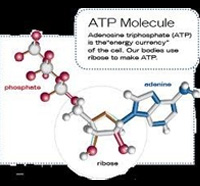I find that as we age, our bodies have a tendency to put on weight, have more aches and pains, and our risk factors for heart disease increases. We may eat the healthiest diets, and we may get adequate exercise… why then are we still plagued with these issues? D-ribose might be one of the key factors in staving off heart disease and those dreaded pounds that keep adding up.
Cellular metabolism decreases with age for a variety of reasons. We stress our bodies with crazy schedules, we are exposed to toxic elements in our environments, we don’t always make good food choices, etc, etc… inevitably, our cells are going to get tired. How do we combat this unavoidable cellular fatigue? Most of the answer lies within our mitochondria, the cell’s energy (ATP) producer.
By supplementing the body with D-ribose we can actually increase the energy (ATP) output from our cells. Increased Adenine Triphosphate (ATP) supports our bodies in a few ways. First, it can actually increase our metabolic rate, without having to increase our workouts. Because of the energy production, D-ribose also promotes our endurance during athletic activity and thus may be very indicated for athletes. Secondly, since it actually takes slightly more cellular energy for our bodies to relax (or stop a muscle contraction) than it does to make the muscle contract, D-ribose has been documented to decrease muscle fatigue and soreness post workouts. In this same fashion it has been demonstrated to decrease pain in fibromyalgia patients and promote energy in chronic fatigue patients.
Much research is available on the cardiovascular benefits of D-ribose as well. Our heart, arguably the most important muscle in the body, contains massive quantities of mitochondria in its cells due to the need for a constant energy supply (our hearts don’t get to rest). When the heart muscle gets fatigued, we are at increased risk for things like heart disease, heart attacks, or congestive heart failure. D-ribose can work to prevent heart conditions and the help heal past occurrences.


